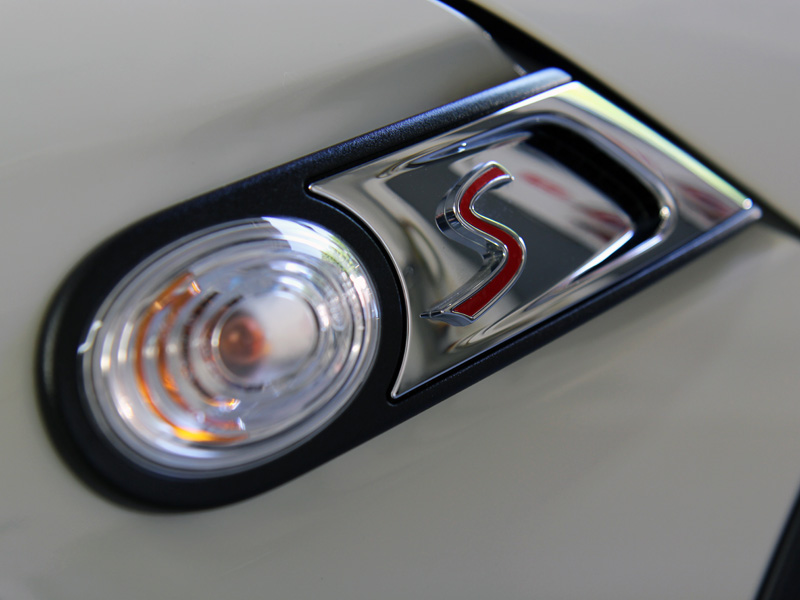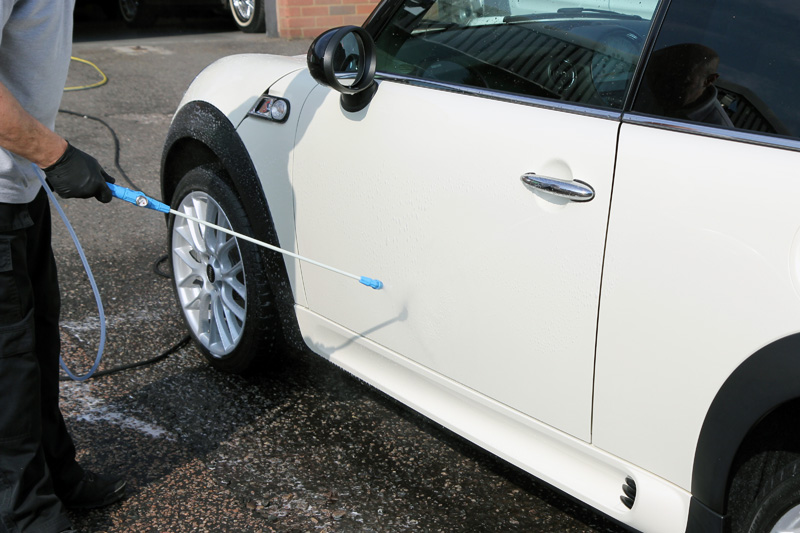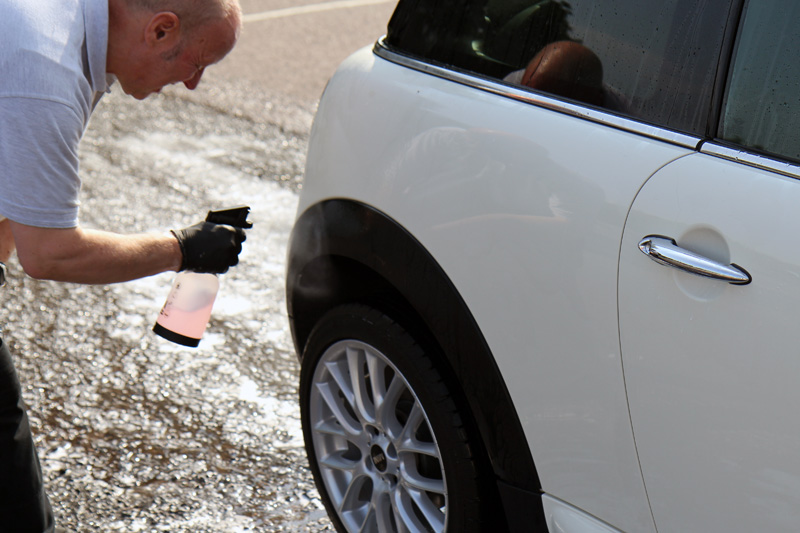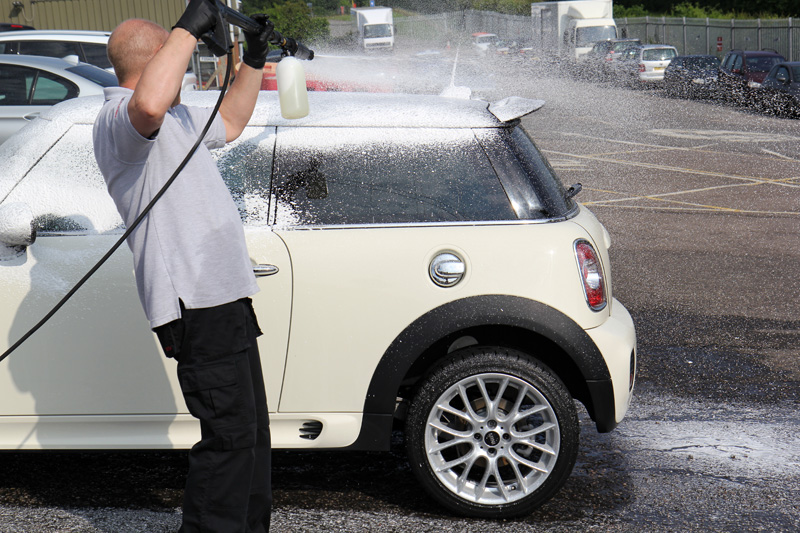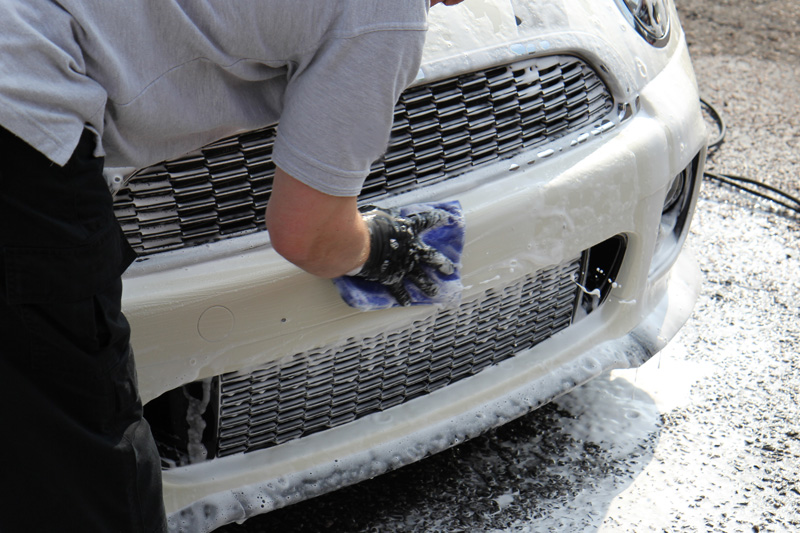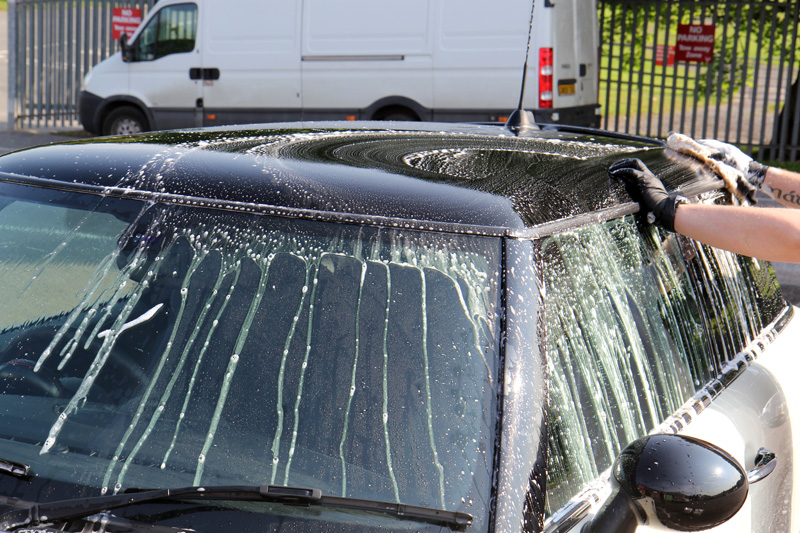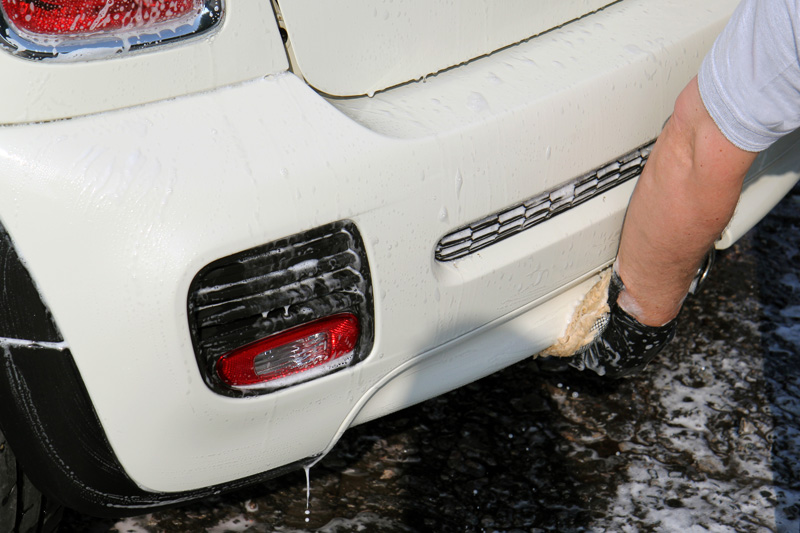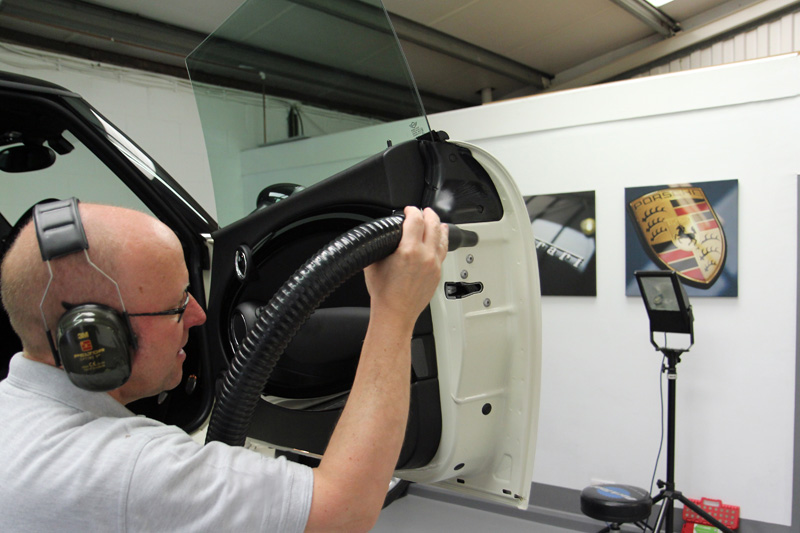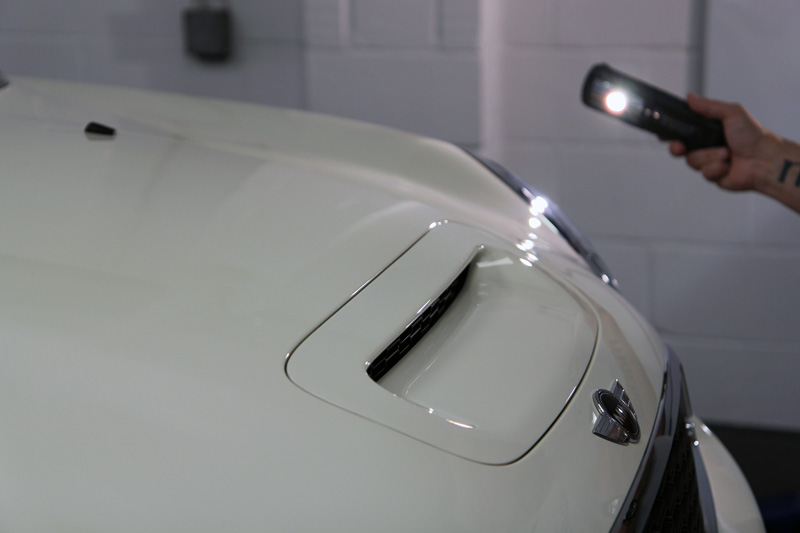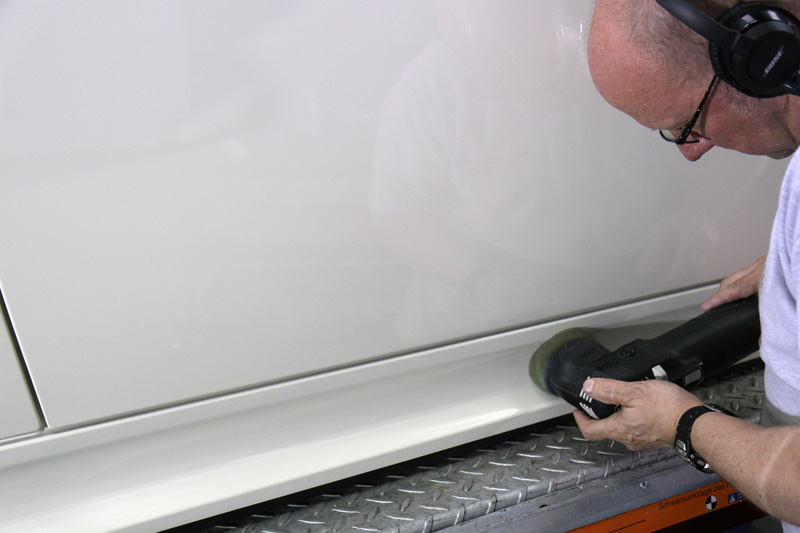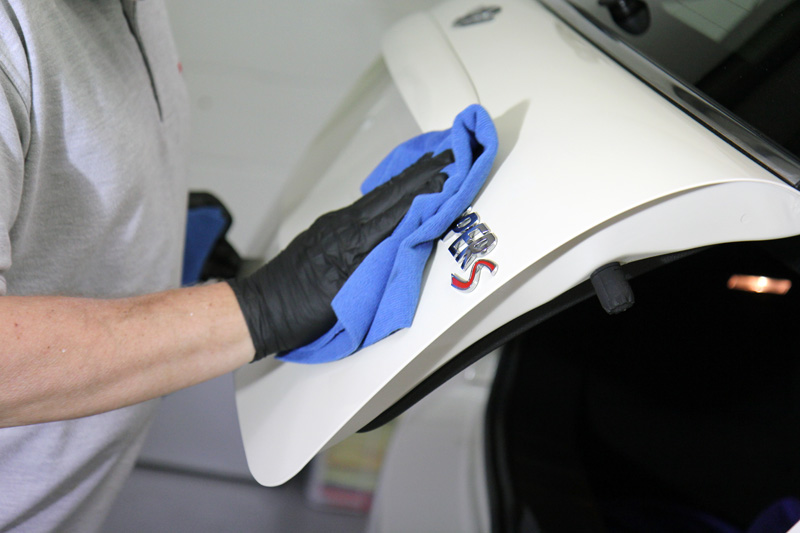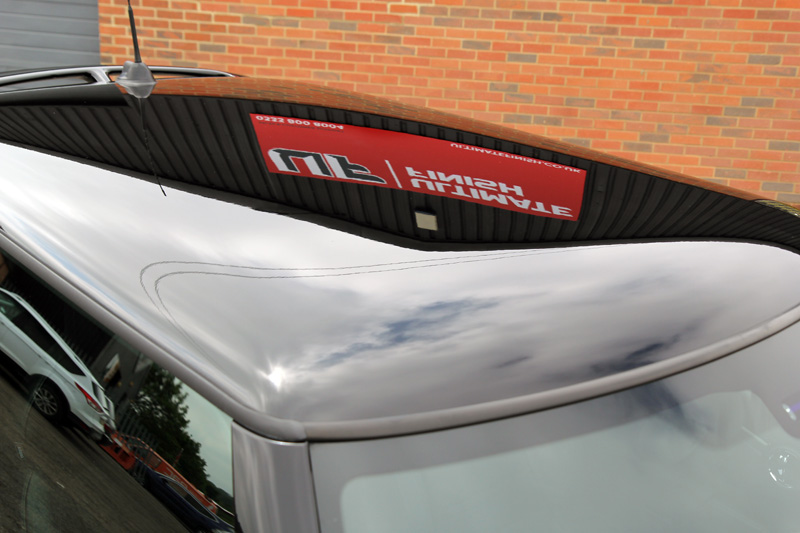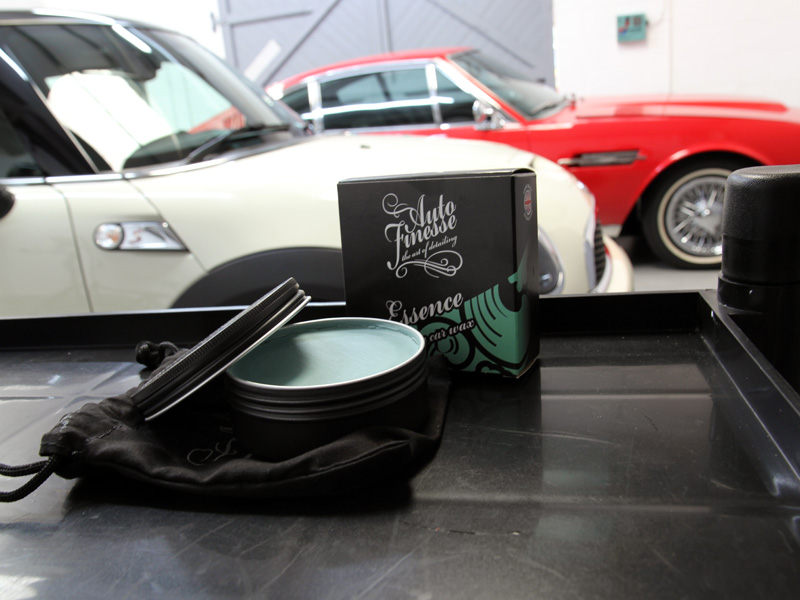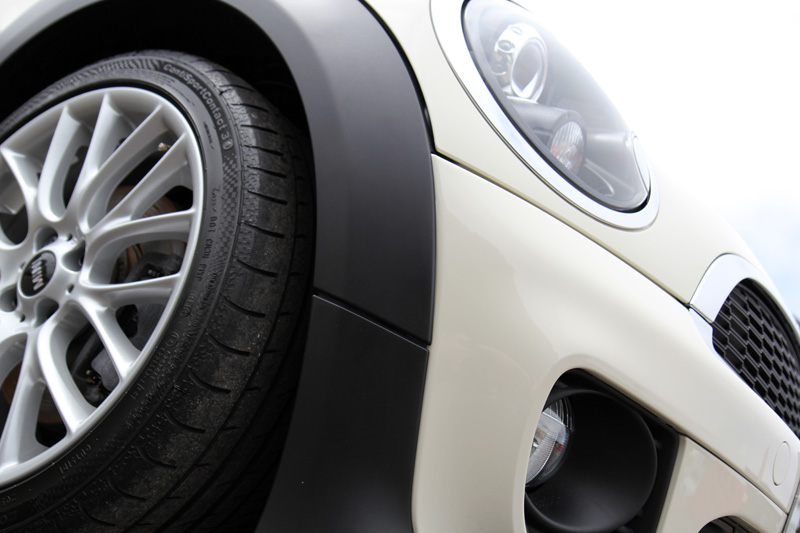Gloss Enhancing A Mini Cooper S – Perfection Is In The Detail
The key to any successful detailing work is in the preparation. You can use the most exclusive carnauba wax to enhance the natural glow of the paint or apply the hardest of ceramic sealants to protect the clear coat beneath, but if the paintwork isn’t pristine, the results won’t shine. When a vehicle arrives at a UF Detailing Studio, the majority of the time is spent on preparing the car: decontamination, cleaning, polishing, refining. Only when these steps have been meticulously followed can the paintwork be considered ready for the application of the chosen last step product.
This ‘Pepper White’ Mini Cooper S arrived at UF’s Brands Hatch based Detailing Studio for a Gloss Enhancement Treatment. Not quite three years old and with fewer than 9000 miles on the clock, it was clearly a cherished vehicle, used for occasions rather than a daily driver. Even so, the owner felt there were aspects of the appearance that could benefit from professional detailing.
First, the car was treated with an iron fallout remover. Iron contamination is derived from brake pads; when a driver applies the brakes, the brake pads are compressed against the brake disc. The friction generated causes minute particles of heated iron to become airborne. These particles then attach to the first substrate they come into contact with. This can be the wheels, sills or bodywork of the host car which can also land on passing cars. As a result, even cars with ceramic brakes can fall victim to iron contamination, acquired from the brake systems of cars around them. Once the hot iron particles land on a substrate, the heat allows them to quickly bond. Iron particles oxidises quickly and if left they can cause pitting in the underlying surface. It is, therefore, imperative to remove these regularly before permanent damage is caused. Iron removing products are sprayed onto the vehicle and the active ingredient shrinks the particles, causing them to break their bond with the substrate and allowing them to be easily rinsed away. Failure to implement this important part of the decontamination process could result in inadvertently rubbing them over the car with a wash mitt during the main wash. An ineffective method for displacing them and one which can lead to unwanted swirls in the paintwork.
The next stage of the process is degreasing: roads throw up oil and diesel residues, particularly after rain. These surface contaminants can be removed using a product formulated to cut through the residue. Some ‘£5’ hand car washes use a highly concentrated version and typically, they’re caustic! The result can be an unsightly ‘fish scale’ appearance on chrome trim. Non-caustic versions are favoured by professional detailers as they are strong enough to break up the oily traffic film whilst still being safe enough to use on brightwork.
In this instance the tyres and trim on the Cooper S required an additional application of degreaser as previously a thick glossy dressing had been used. Gloss dressings contain silicone which eventually will turn tyres brown, so it was essential to remove all traces, taking the tyres and trim back to their natural look.
Next up, an adhesive remover was applied to dissolve any tree sap, tar or bug squash that had become bonded to the cars surface. Typically, this type of contamination can be removed using a wash mitt, but the pressure required is likely to incur further unwanted swirls. Spraying an adhesive remover onto the paintwork first to dissolve the contaminants is much safer, as it allows them to be safely rinsed away prior to washing.
To ensure all remaining larger particles of dirt and grit were removed prior to the main wash, Ultimate Snow Foam was applied though a foam lance attached to a Kranzle K 1152 pressure washer. This combination produces a thick foam that clings even to the vertical surfaces of the vehicle, lifting contamination away and encapsulating the particles within the foam. This can then be jet-washed off.
At this point, the Mini had been through five stages of pre-cleaning, all using non-contact methods to best preserve the paintwork. Now, Snow Foam was reapplied and this time used as a lubricant for a clay pad. These professional grade pads act in the same way traditional clay bars do, shearing away any remaining bonded contamination to ensure a silky smooth finish to the paintwork.
The car was then rinsed before the Two Bucket Method was used to give the car a thorough wash. The Two Bucket Method uses a bucket with soapy wash water and a bucket with clean rinse water, both buckets containing Grit Guards. The wash mitt is dunked into the wash water, placed onto the car and a section is washed. The mitt is then rinsed in the clean rinse water and rubbed over the Grit Guard, releasing dirt collected from the car which then settles to the bottom of the bucket, beneath the guard. The clean mitt is then reloaded with soapy wash water and the process continues until the car is clean. This process minimises cross contamination and helps to keep the paintwork safe.
After rinsing the suds away, an Aqua Gleam De-ionising Water Filter was attached in-line with the hose and the car was given a final, pure water rinse to avoid water spotting. The main body of the car was dried with ultra-soft microfibre towels and an air blower used to ensure that all traces of water were removed from the nooks and crannies.
Inspection of the white paintwork under high-intensity lighting revealed a few swirl marks from previous washing, however, the solid black roof and A and C pillars were covered in more severe marring all of which would require machine polishing.
Solid black paintwork is always softer than any other colour and so is more susceptible to wash swirls. The roof is metal, the pillars are plastic, so correcting their appearance requires a different approach. Metal is easier to correct, but the soft nature of the paint then makes it trickier to refine. Plastic, on the other hand, doesn’t retain heat in the same way. So, correcting takes longer, but refining is easier because it’s less prone to micro-scratches. – Derek Ginger, Master Detailer, UF Detailing Studio.
To correct the paintwork defects, a RUPES LHR12E Duetto Random Orbital Polisher was used with a combination of Menzerna Heavy Cut Compound 400 on a Kamikaze Collection Banzai Dynamics Foam Polishing Pad. For the contoured parts of the Cooper S, a RUPES LHR75E Mini with its smaller 7.5mm throw was used.
The paintwork refining process was completed using a FLEX PE14-2 rotary machine polisher with a 3M PERFECT-IT III Black Polishing Pad and Menzerna Super Finish Plus 3800.
With the defects removed and the paintwork refined, it was then prepared for the application of a layer of sealant. In this instance, the owner requested Gtechniq Crystal Serum be applied. First, the paintwork was cleansed with Gtechniq Panel Wipe, removing any remaining polish residue left over from machine polishing. Then, Crystal Serum was applied by hand. Based on nanotechnology, Crystal Serum is a ceramic sealant that provides enhanced protection from wash swirls, industrial and environmental fallout such as acid rain and bird lime, as well as being virtually impervious to extremes of pH. Hydrophobic and oleophobic, it repels dirt, water, oils and inhibits contamination from adhering to treated surfaces, keeping the vehicle looking cleaner for longer. Crystal Serum forms strong chemical bonds with the paintwork so will not wash away.
To ensure maximum performance and longevity, Crystal Serum must be applied within tightly controlled environmental conditions and is, therefore, available only as a service through Gtechniq-approved detailing studios. Once in place, this sealant is guaranteed by the manufacturer for seven years.
To enhance the hydrophobic element and to provide an additional layer of protection, the owner specified a layer of Auto Finesse Essence Carnauba Wax be applied. Designed to bring out the shine in white and light coloured paintwork, Essence contains around 40% by volume of high-quality carnauba wax to impart a fabulous wet-look shine to the finish.
It might be considered unusual these days to use a natural carnauba wax over the top of a nano-ceramic sealant, but it makes perfect sense. Carnauba is naturally hydrophobic, so the water beading effect is amazing. The depth of shine is incredible and a decent carnauba wax will last several months. It’s also easy for the owner to re-apply, making sure the integrity of the underlying sealant is preserved for as long as possible. – Derek Ginger, Master Detailer, UF Detailing Studio.
The results speak for themselves!
UF Detailing Studio – Award Winning Detailing. Call 0333 800 8004 to discuss your requirements and arrange a free vehicle appraisal.


